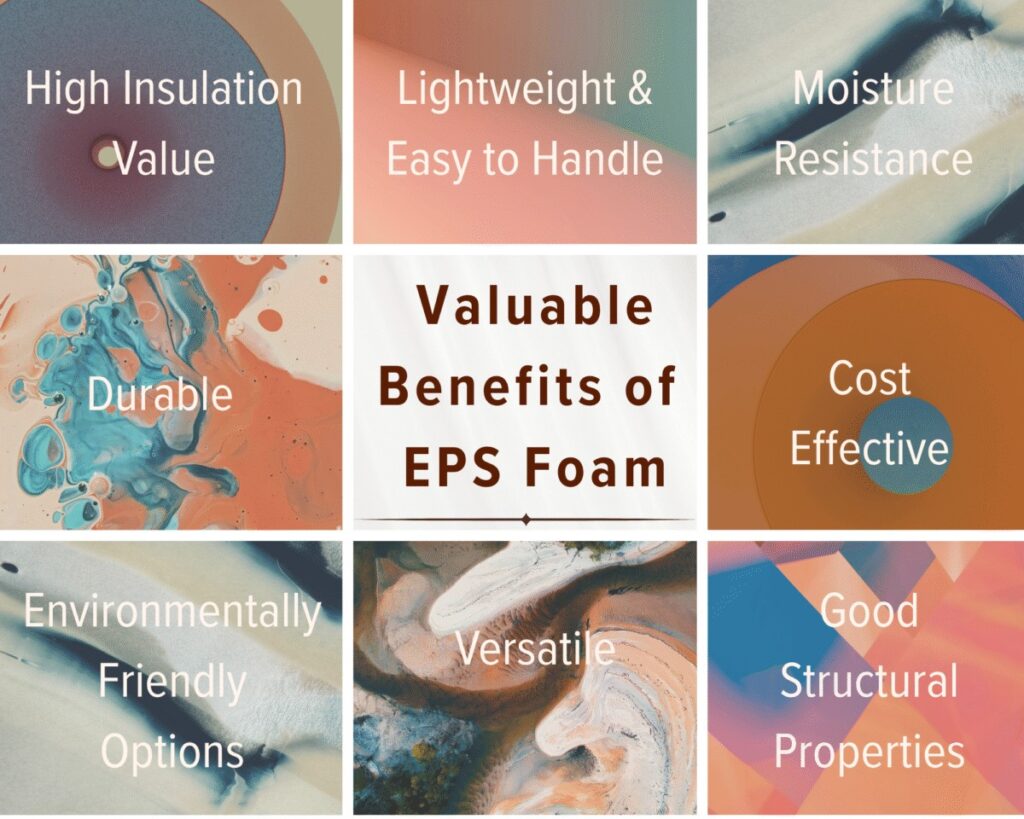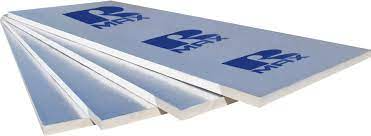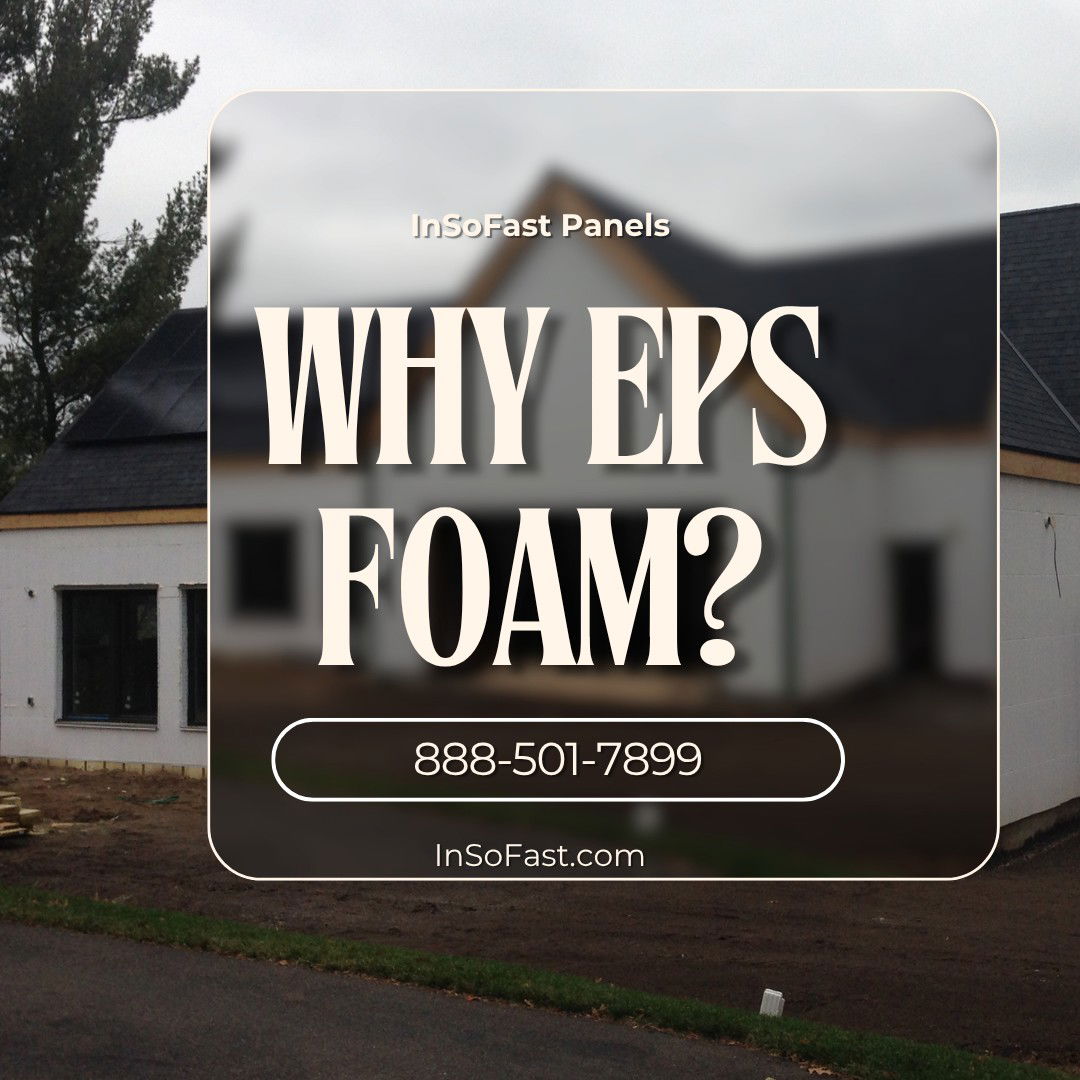5 Reasons We Chose EPS For Our Insulation Panels
5 Reasons We Chose EPS Foam for the InSoFast Panel
At InSoFast, we understand the importance of finding the best insulation solutions for your new construction or renovation project. Whether you’re a seasoned contractor or a homeowner embarking on a DIY project, our continuous insulation offers unmatched performance, ease of installation, and long-term value.
When ICFs were introduced to Ed Scherrer, InSoFast Product Developer and Owner, he took it on with complete enthusiasm, While ICFs provide a superior structure, the actual construction process was technically difficult so Ed developed training seminars for homeowners and contractors. InSoFast panels were born from his experiences in the ICF industry.
Today at InSoFast, our EPS panels are engineered to simplifying insulation with built-in framing, drainage, and electrical raceways for a fast, efficient install. This design eliminates thermal bridging and the all-in-one panels provide a secure attachment point for drywall, siding, or cabinets while ensuring superior moisture control. InSoFast panels install easily using standard tools—no complex framing required.
5 Reasons You Should Choose InSoFast EPS Insulation Panels
- InSoFast® is designed to be applied directly over any masonry block or poured concrete block surface above or below grade. InSoFast® makes it easy to retrofit existing framed homes with an additional layer of insulation by using the recessed attachment points to fasten to existing framed walls with nails or screws.
- What makes InSoFast® ideal for both basement and retrofit applications starts with the unique properties of the foam and the specialized process it is manufactured with. InSoFast® is formed with high density closed cell foam which is not damaged by moisture. InSoFast® works to protect your structure. It’s like installing a protective layer of Gortex® fabric which is noted for its ability to shed water while still being able to “breathe” and to allow drying under extreme conditions.
- InSoFast® offers an extreme advantage over other types of insulation. The common pink or blue type of (XPS) extruded closed cell foam insulation board used in thickness of more than ¾” will form a vapor barrier and prevent drying of the wall system which can lead to trapped moisture problems. This also applies to any other type of insulation board with a “foil face” or “plastic skin.” This can be dangerous for retrofits because it can cause a “wet diaper” effect if the wall already has an interior vapor barrier.
- Other foam products like the open cells of the low density “bead board” and even the spray in open cell foam products, and batt insulation like conventional fiberglass insulation, are proven to work well when kept dry. However, when exposed to excess moisture or water, like in the typical basement, these systems can soak up and store large amounts of water like a sponge. Because of the inability to shed water and dry quickly when located within conventional framing, wood or even just the paper on the drywall promotes mold growth and cause it to be ineffective as an insulator.
- The fully insulated polypropylene studs of the InSoFast® panel are just one more safeguard from mold. These studs which are integral in each of the InSoFast® panels will not warp, rot or decay and provide the perfect base for attaching siding or drywall. InSoFast® is truly a user friendly, healthy, and mold-resistant product for your home.

High Insulating R-Value
High density EPS typically has an R-value of around 4.2 per inch, which measures its thermal resistance. This makes it effective at slowing heat transfer and maintaining indoor temperatures.
Lightweight and Easy to Handle
EPS is extremely lightweight, making it easy to transport, cut, and install, reducing labor and equipment needs on-site.
Moisture Resistance
While EPS can absorb some water if not properly sealed, it does not retain moisture, allowing it to dry out and maintain insulation performance. Special coatings or facings can improve moisture resistance.
Durability
EPS does not degrade over time under normal use conditions, meaning it maintains its insulation properties for decades, offering long-term value. EPS also does not contain a blowing agent that can off-gas out of the insulation, reducing its effectiveness as an insulator.
Cost-Effective
EPS is generally less expensive than other rigid foam options like XPS (extruded polystyrene) or polyiso, making it attractive for budget-conscious projects.
Environmentally Friendly Options
Many EPS products contain recycled content and can be recycled themselves. It also has a relatively low embodied energy compared to some other foam insulation products.
Versatility
EPS can be used in walls, roofs, under slabs, and foundation applications. It can be molded into various shapes and sizes for different construction needs.
Good Structural Properties
While not load-bearing on its own, EPS can provide compressive strength adequate for many construction applications.
Comparison to Other Foam Types
2”+ Thick Foam Board Extruded XPS
XPS Extruded Polystyrene is formed by injecting a blowing agent as the melted polystyrene beads are extruded through a die. XPS can be any color but green, blue, and pink are common. The 4×8 sheets shrink 1-2% over time. XPS is generally rated at R-5 per in. and is available in compressive strength from 15 psi to 100 psi. Type X (15 psi) and type IV (25 psi) are the most common. At the same density, XPS is stronger than EPS, but its manufacturing process is the most damaging to the environment. The most common blowing agent, HFC-134a, has a GWP 1000 to 1500 times more damaging than CO2. The switch over to less damaging blowing agents with a GWP of 7, called hydrofluoroolefins (HFOs), has been slow in the U.S. source Green Building Advisor
Typical blowing agents for XPS are CFC-12, HCFC-142b, and HFC-134a. There have been recent shifts away from the highest GWP HFCs. Eleven states have banned foams blown with HFC-134a (GWP of 1430) and other high-GWP blowing agents, including HFC-245fa, as of January 1, 2022. Canada also created a maximum GWP for foam blowing agents.

Poly Iso – Foil Faced Insulation – Polyisocyanurate
This insulation option is an extruded foam with a foil face on both sides and a vapor barrier which eliminates drying. Unfortunately, it loses its R-value over time as the blowing agent leaches out. Poly iso also loses significant R-value in cold climates because the blowing agent condenses. The 4×8 sheets shrink 1-2% over time. Cladding loads are dependent on the screws and it is difficult to locate studs for fastening rainscreen furring. Like XPS, as the insulation compresses, the screws bend and sag over time creating a long-term creep because the screws do not push up against something solid. Seams should not be placed over studs to eliminate gaps of insulation directly over framing when panels shrink. It is also prohibited when used with vapor barrier on inside IECC 702.7(2) (2021IRC

Take the Next Step with InSoFast
For 20 years, we have been an innovator in the insulation industry, with engineered solutions that save time and money. We pride ourselves on excellent customer service and quality products that are 100% made in the USA. InSoFast strives to change the way homes are built, making them more comfortable, energy efficient and healthier. Visit our website to take the next step in your project or call our Sales Team at 888-501-7899 to talk more about our solutions




